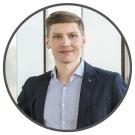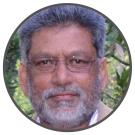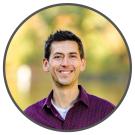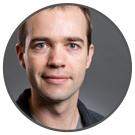The International Aerosol Modeling Algorithms Conference Committee is comprised of researchers and educators throughout the world who have been working in the field for many years. The committee is dedicated to the dissemination of information that can assist in the improvement of research for decades to come. They have taken the time to ensure all information presented at this conference is of the highest quality, as well as relevant and scientifically accurate.
2021 Lead Chairs

Faye McNeil 
Professor, Columbia University, Department of Chemical Engineering
Prof. McNeill’s research is focused on the chemistry and physics of atmospheric aerosol particles and ice in the environment, and their roles in atmospheric chemistry, air quality, and climate. The McNeill group performs laboratory, theoretical, and modeling studies with a focus on multiphase processes involving atmospheric aerosols and ice in the environment. Special interest areas include the chemical sources of atmospheric particulate matter and its evolution in the atmosphere, and the influence of atmospheric aerosol chemistry on climate. Prof. McNeill is particularly interested in using modeling to bridge the scales between the large amount of detailed, molecular-level data researchers gather in the laboratory and the coarse-grained information required by large-scale models. Besides improving our basic understanding of the Earth system, she and her research group are using the results of their work to improve large-scale models of atmospheric chemistry and climate, thereby enhancing their prognostic ability, providing insight into the effects of human activity on the environment, and setting the stage for smart policy decisions. McNeill received her B.S. in chemical engineering from Caltech in 1999 and her PhD in chemical engineering from MIT in 2005, where she was a NASA Earth System Science Fellow.

David Topping 
Senior Lecturer, University of Manchester, Centre for Atmospheric Science
David Topping is a senior lecturer in the Centre for Atmospheric Science at the University of Manchester. He completed his PhD in 2005 on ’Modelling the hygroscopic properties of atmospheric aerosol particles’ at the University of Manchester Institute of Science and Technology (UMIST) after finishing a degree in Physics at the same institute. Following this he became a fellow of the UK National Centre for Atmospheric Science (NCAS) before taking on the role of a senior research fellow part funded by the School of Earth and Environmental Science (SEES)/Centre for Atmospheric Science (CAS) at the University of Manchester.
2021 Technical Program Committee

Jeremy Avise 
Branch Chief, California Air Resources Board, Modeling and Meteorology Branch
Dr. Jeremy Avise is Chief of the Modeling and Meteorology Branch at the California Air Resources Board (CARB). Jeremy leads a team of scientists, engineers, and meteorologists who are responsible for conducting regional and local scale modeling in support of State Implementation Plan (SIP) development for ozone and PM2.5, regulatory/rule development, air toxics risk assessments, and CARB’s Community Air Protection Program. In addition, Jeremy’s team oversees the State’s Smoke Management program for agricultural and prescribed burning.

Kelley Barsanti 
Associate Professor, UC Riverside, Department of Chemical and Environmental Engineering, Center for Environmental Research and Technology
Kelley Barsanti received her Ph.D. in Environmental Science & Engineering from the OGI School of Science & Engineering. She then served as an Advanced Study Program Postdoctoral Fellow at the National Center for Atmospheric Research. Dr. Barsanti’s research focuses on the development of mechanistic models for the prediction of atmospheric particulate matter (“aerosols”). Her primary research tools include comprehensive two-dimensional gas chromatography and process-level models to elucidate chemical and physical transformations of organic compounds as they evolve from gaseous emissions to particle constituents. Current research projects include improving speciation of organic compounds in emissions inventories for biomass burning and other combustion sources; improving model representation of secondary organic aerosol in biomass burning plumes; and developing models of new particle formation.

Thomas Berkemeier 
Group Leader, Max Planck Institute for Chemistry
Thomas Berkemeier is a research group leader at the Max Planck Institute for Chemistry, Mainz, Germany. His research is centered around the mathematical description of multiphase processes in the atmosphere and the human body. His research team develops kinetic models and conducts laboratory experiments with the goal of understanding the chemistry and physics of atmospherically- and health-relevant processes at and across interfaces. Special attention is given to oxidation chemistry, gas-particle partitioning, and the implications of a viscous phase state.

Chenxia Cai 
Manager, California Air Resources Board, Regional Air Quality Modeling Section
Chenxia Cai received her PhD in Atmospheric Science from State University of New York at Albany. She has applied air quality models to study various topics related with the formation of ozone and particulate matters. Chenxia is currently the manager of the Regional Air Quality Modeling Section in California Air Resources Board (CARB). Her section is responsible for carrying out the state-of-the-science meteorology and air-quality modeling required for control strategy evaluation and development, pollution transport assessment, and State Implementation Plan (SIP) updates for all criteria pollutants and regional haze in California. Her section also provides modeling support for all major field studies in California as well as other research activities at CARB.

Chris Cappa 
Professor, UC Davis, Department of Civil and Environmental Engineering
Professor Cappa is interested in quantifying and understanding the processes that control the emission, evolution, and impacts of atmospheric aerosols. The Cappa group carries out laboratory and field studies, and develops and applies simple models, to characterize and predict aerosol physical, chemical and optical properties. Their work informs the development of more effective air pollution control strategies and air pollution and climate models, and provides insights into the atmospheric behavior of small particles.

Jianjun (James) Chen 
Air Resources Engineer, California Air Resources Board
Jianjun (James) Chen is an Air Resources Engineer in the Regional Air Quality Modeling section of California Air Resources Board (CARB). Since joining CARB in 2009, he has mainly focused on regional particulate matter modeling in California, particularly for the San Joaquin Valley, which has one of the highest PM2.5 pollution in the United States. His work at CARB has been used to support the development of State Implementation Plans for attaining National Ambient Air Quality Standards. He has published over 20 journal and conference papers. Before joining CARB, he was a postdoc researcher at UC, Davis. He obtained his Ph.D. from the University of New Hampshire.

Delphine Farmer 
Associate Professor, Colorado State University, Department of Chemistry
Delphine Farmer, PhD, is an Associate Professor of Atmospheric Chemistry at Colorado State University. Dr. Farmer’s research focuses on outdoor atmospheric and indoor chemistry with an emphasis on understanding the sources and sinks of reactive trace gases and particles and their effects on climate, ecosystems, and human health. Dr. Farmer earned an MS in Environmental Science, Policy and Management and a PhD in Chemistry from the University of California, Berkeley. Dr. Farmer received an Arnold and Mabel Beckman Young Investigator Award, as well as awards for graduate teaching and mentoring at CSU.

Tzung-May Fu 
Professor, Southern University of Science and Technology, School of Environmental Science and Engineering
Tzung-May Fu,Ph.D., Harvard University. Prior to her current appointment, Fu was Associate Professor (tenured) and “Bairen” Professor in the Department of Atmospheric and Oceanic Sciences, Peking University, and Assistant Professor in the Department of Civil and Structural Engineering, Hong Kong Polytechnic University. Her research interests are in air pollution, global and regional atmospheric chemistry, and chemistry-climate interactions. Research topics include organic gases and organic aerosols, tropospheric ozone, climate-air quality interactions, cloud-aerosol interactions, remote sensing and inverse modeling of atmospheric constituents, pollutant long-range transport, and air-sea exchange of organics. Fu has authored or co-authored more than 50 SCI peer reviewed papers. She has won the National Natural Science Foundation of China Outstanding Young Scientist Fellowship in 2012, the Tu Chang Wang Award in Meteorological Science and Technology in 2013, and the Second Prize of Natural Science Award of Ministry of Education in 2019.

Ajith Kaduwela 
Senior Staff Scientist, California Air Resources Board
Professional Research Scientist, UC Davis, Air Quality Research Center
Ajith holds a B.S. degree in chemistry and mathematics and a Ph.D. in chemical physics. Prior to joining ARB he was a researcher at the Lawrence Berkeley National Laboratory and the Department of Physics, University of California at Davis. He has authored over seventy publications in peer-reviewed scientific journals on various aspects of computational chemistry and physics. His current research focuses on atmospheric chemical mechanisms for regulatory applications and low-cost air sensors.

Ben Murphy 
Physical Scientist, U.S. Environmental Protection Agency
Ben Murphy is a Physical Scientist at the U.S. Environmental Protection Agency Office of Research and Development specializing in regional-scale ambient PM model development. Among his research interests are improving the representations of particulate- and gas-phase organic emissions, SOA formation, and OA aging as well as formation and evolution of ultrafine particles in the U.S. Recently, Ben has extended the U.S. EPA Community Multiscale Air Quality (CMAQ) model to investigate sources and fate of per- and polyfluoroalkyl substances (PFAS), a pollutant class of high concern for the Agency.

Tinja Olenius 
Research Scientist, Swedish Meteorological and Hydrological Institute
Tinja Olenius is a research scientist at the Air Quality Unit of Swedish Meteorological and Hydrological Institute (SMHI). Her research interests include aerosol physics and air quality modeling from molecular processes to box and regional-scale models. Her current work focuses on modeling new-particle formation dynamics and growth of newly-formed molecular clusters to larger nanoparticles, as well as implementing process-scale results in larger-scale models to improve the description of aerosol sources and number concentrations.

Ivan Piletic 
Physical Scientist, U.S. Environmental Protection Agency
Ivan Piletic is a physical scientist in the Center for Environmental Measurement and Modeling (CEMM) at the United States Environmental Protection Agency (EPA) in Research Triangle Park, North Carolina. He obtained his PhD at Stanford University studying the dynamics of water in a wide variety of environments using ultrafast laser spectroscopy. He subsequently adapted these methods to image melanomas at high resolution during a post-doctoral position at Duke University. Since then, he has worked at EPA as an atmospheric scientist exploring the connections between gas and aerosol particle phase chemistry using computational and experimental techniques. His work is used to refine the chemistry in air quality models in order to identify air pollution sources and develop more effective control strategies in different regions of the US.

Manabu Shiraiwa 
Associate Professor, UC Irvine, Department of Chemistry
Manabu Shiraiwa is Associate Professor of Chemistry at the University of California, Irvine. He has worked as group leader at the Max Planck Institute for Chemistry Mainz, Germany (2013-2016) and as JSPS postdoc fellow at the California Institute of Technology (2012-2013). He received BS and MS at the University of Tokyo and PhD from the Max Planck Institute for Chemistry in 2011. His research focuses on multiphase chemistry of organic aerosols, reactive oxygen species and aerosol health effects, and modeling chemistry of indoor environments. He has published >110 peer-reviewed papers.

Manish Shrivastava 
Earth Scientist, Pacific Northwest National Laboratory
Dr. Shrivastava is currently a senior Earth Systems Scientist at the Pacific Northwest National Laboratory (PNNL). He is also an adjoint professor in the Department of Chemistry at Michigan Technological University. He serves on the editorial boards of two peer-reviewed journals in atmospheric sciences: Atmospheric Chemistry and Physics (ACP) and Atmosphere. In 2018, he was awarded the highly prestigious and competitive U.S. Department of Energy Early Career Award to conduct research on finding missing links associated with aerosol-cloud interactions. His research bridges measurements and modeling of secondary organic aerosols (SOA), and their interactions with clouds and radiative forcing. Over the past decade, he has developed and implemented several new measurement-based model formulations of SOA within community regional and global models. In 2015, he organized and chaired a US DOE-supported workshop on SOA at PNNL and led a critical review paper on the topic in Reviews of Geophysics (2017). Dr. Shrivastava received his Ph.D. from Carnegie Mellon University, USA.

Christopher Tessum 
Assistant Professor, University of Illinois, Department of Civil and Environmental Engineering
Dr. Christopher Tessum joined the CEE department as an Assistant Professor in January 2020. His research focuses on modeling air pollution and its health impacts, quantifying inequities in the distribution of those impacts, and proposing and testing solutions. He studies the relationships between emissions, the human activities that cause them, and the resulting health impacts, and he develops modeling capabilities to enable these types of analyses.
Before joining UIUC, Dr. Tessum was a research scientist in the Department of Civil and Environmental Engineering at the University of Washington in Seattle and a postdoctoral researcher in the Department of Bioproducts and Biosystems Engineering at the University of Minnesota. He received a Ph.D. (2014) in Civil, Environmental and Geo- Engineering, and a B.M.E. in Mechanical Engineering (2006), from the University of Minnesota.

Zhonghua Zheng 
Postdoctoral Research Scientist, Columbia University, Lamont-Doherty Earth Observatory
Dr. Zhonghua Zheng is a Postdoctoral Research Scientist at Lamont-Doherty Earth Observatory of Columbia University, working with Prof. Arlene M. Fiore and Prof. Daniel M. Westervelt. He received his Ph.D. degree in Environmental Engineering in Civil Engineering with a concentration in Computational Science and Engineering at the University of Illinois at Urbana-Champaign in December 2020, under the supervision of Prof. Nicole Riemer and Prof. Lei Zhao.
Dr. Zheng was a Data Scientist Intern at Bayer for three years (January 2018 to December 2020), mainly working for The Climate Corporation; and an ORISE Ph.D. Intern/Researcher at Oak Ridge National Laboratory (ORNL), working with National Center for Computational Sciences - Advanced Data and Workflow Group.
Dr. Zheng is passionate about learning and solving practical problems using Data Science (DS), Artificial Intelligence (AI), Cloud Computing, and High-Performance Computing (HPC). His work focuses on computer simulation, modeling, and spatiotemporal analysis of (1) urban climate and environment, (2) air quality and aerosol properties, and (3) complex agriculture-environment nexus system.